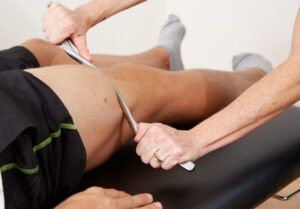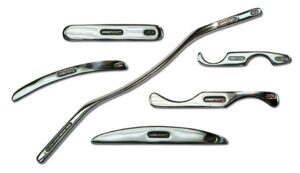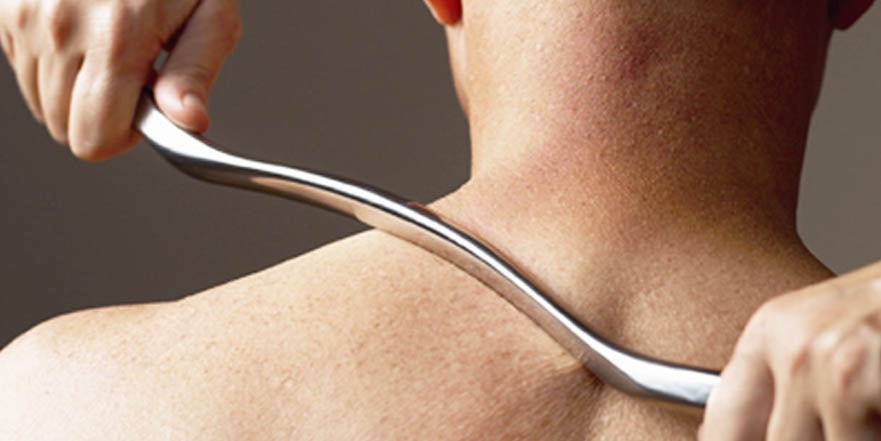Graston Technique physical therapy is a type of treatment that uses special tools to help break up scar tissue and adhesions. This type of therapy has been shown to be very effective in helping people recover from injuries, surgery, or other conditions. There are different types of Graston Technique physical therapy available, depending on your needs. In this blog post, we will discuss the different types of Graston Technique physical therapy and how they can help you get back to your best!
Contents
- 1 What Is Graston Technique?
- 2 What Are The Different Types Of Graston Techniques?
- 3 What Are The Benefits Of The Graston Technique Physical Therapy?
- 4 What Are The Side Effects Of the Graston Technique?
- 5 What Tools Are Used In Graston Technique?
- 6 How Long Does It Take To Recover Using Graston Technique?
- 7 Conclusion
What Is Graston Technique?
 Graston Technique is a type of physical therapy that uses specialized tools to help repair and heal soft tissue injuries. It focuses specifically on helping patients recover from chronic pain, such as pulled muscles, tendinitis, and other similar conditions.
Graston Technique is a type of physical therapy that uses specialized tools to help repair and heal soft tissue injuries. It focuses specifically on helping patients recover from chronic pain, such as pulled muscles, tendinitis, and other similar conditions.
It is also frequently used in conjunction with other forms of physical therapy, such as massage and stretching techniques, to help patients meet their goals more quickly and effectively.
What Are The Different Types Of Graston Techniques?

There are several different types of Graston Techniques that may be used depending on the needs of each individual patient. These include:
Graston Soft Tissue Mobilization (GSTM)
This type of Graston Technique physical therapy involves using a specialized tool to gently massage soft tissues, such as muscles and tendons. This can help to relieve pain and reduce swelling in the area.
Graston Instrument Assisted Soft Tissue Mobilization (GAMSTM)
GAMSTM is similar to GSTM but uses a slightly different tool that is designed to help break up scar tissue and increase flexibility in the affected area. This can be useful for patients who are dealing with chronic pain or mobility issues.
Graston Pre-Event Assist (GEPA)
Using GEPA before activity or competition to help warm up the muscles and prepare them for action. This can help reduce the risk of injury and improve performance during the activity.
Graston Post-Event Assist (GEPA)
GEPA is used after an activity or competition to help speed up recovery and promote healing in the affected area. It may be combined with other treatments, such as massage and stretching, to help reduce pain and prevent further injury.
Graston Restoration (GRST)
GRST is a more advanced type of treatment that requires specialized training. It uses thermal energy in combination with the Graston Technique tools to help increase blood flow, break up scar tissue, and release tension in the affected area. This can provide long-term relief from injuries and chronic pain.
Although there are many different types of Graston Techniques, they all have the same goal of helping patients. They also help to recover quickly and effectively from their injuries. If you are dealing with pain or mobility issues, talk to your doctor about whether this type of treatment could be right for you.
What Are The Benefits Of The Graston Technique Physical Therapy?
The benefits of this technique are many, and many people who have tried it say that their pain is much less severe afterwards. The benefits of this treatment are :
Reduces Pain In Affected Areas
The first benefit of the Graston technique is that it can help to reduce pain in the affected area. This is because the treatment works by breaking down scar tissue. This technique help repair soft tissues that have been damaged, which will help to relieve stiffness and soreness in the muscles and joints.
Improve Flexibility And Mobility
Another benefit of this technique is that it can help to improve flexibility and mobility in the affected area. This is because it works by breaking down scar tissue and increasing blood flow, so the muscles and joints can better stretch out and move more easily.
Reduces Inflammation
Finally, the Graston technique also helps reduce inflammation in the affected area. This is another key benefit of this treatment, as reducing inflammation can help to prevent further damage and reduce pain in the long term.
Overall, if you are suffering from chronic pain or stiffness in a particular area of your body, the Graston technique may be able to help by breaking down scar tissue and improving soft tissue healing. Talk to your doctor or physical therapist about whether this treatment could be right for you.
What Are The Side Effects Of the Graston Technique?
Unfortunately, there is no specific answer to that question because it will vary from person to person. In general, however, patients can expect a few mild and temporary side effects as they recover from their injuries
The patient is likely to experience redness, some swelling and discomfort. They may even have some bruising when soft tissue constraints are released throughout the therapy. Within 48 to 72 hours, the soreness ought to go away. Stretching, applying ice, and drinking plenty of water will aid in the healing process.
What Tools Are Used In Graston Technique?
 The tools used in the Graston Technique of physical therapy are called “instruments.” The instruments used in the Graston Technique physical therapy are smooth metal tools originally developed for use by athletes and sports medicine practitioners.
The tools used in the Graston Technique of physical therapy are called “instruments.” The instruments used in the Graston Technique physical therapy are smooth metal tools originally developed for use by athletes and sports medicine practitioners.
Graston Technique uses five different types of instruments:
The Curved And Flat Fork
The curved and flat fork typically works on the topmost layers of the skin while breaking down scar tissue, which can be painful and cause significant discomfort.
The Screwdriver
The screwdriver instrument works to soften connective tissues by using friction to reduce constriction or “knots” in the muscles.
The Round And Oval Tools
The round and oval tools work to loosen or “twist” out scar tissue by applying a twisting motion to the skin, breaking up adhesions in the muscles and tendons below.
The Mallet
The mallet work applies pressure to various parts of the body that are more difficult to reach with the other instruments, such as the shoulder or hip.
The Blade Tool
The blade tool helps break apart and soften scar tissue by applying pressure directly to the skin.
Each of these tools works individually or in combination with other instruments depending on your specific needs and treatment goals.
How Long Does It Take To Recover Using Graston Technique?
Recovery using the Graston technique depends on a number of factors. First, the type and severity of the injury will have an effect. As with any treatment, it is important to be patient and get plenty of rest in order for your body to heal properly.
Recovery time will be faster if you get adequate support from your physical therapist during the recovery process. A good physical therapist will provide you with a tailored rehabilitation plan. This plan will include rest and exercise, as well as other types of treatments such as massage or heat therapy, depending on your specific needs.
Conclusion
In conclusion, the Graston technique is a useful tool in the physical therapy field. It is a technique that helps to get deep into the muscles and work out knots and scar tissue. A lot of people say that it is one of the best types of treatment they have received.
Physical Therapy help patients recover from pain. If you’re experiencing Back pain, Shoulder pain, Knee pain, Neck pain, Elbow pain, Hip pain, or Arthritis pain, a physical therapist at MantraCare can help: Book a physiotherapy session.


